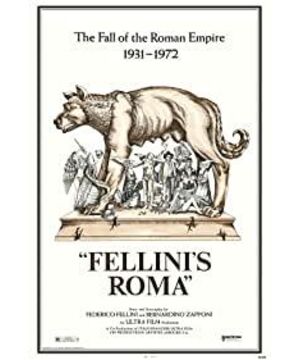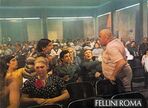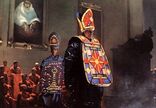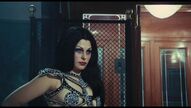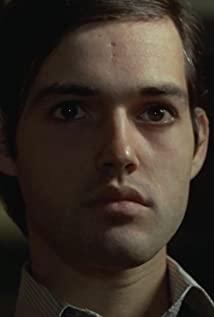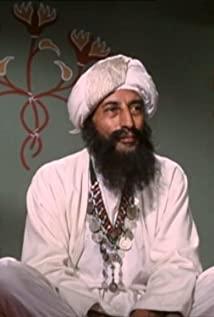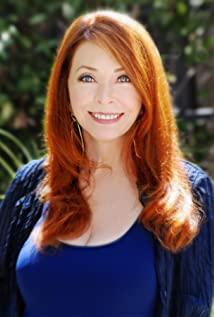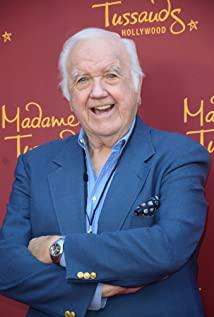a
read Fellini's people, a serious lack of nutrition are not the people who love life, or his own life experience. There are many people in the world, he has lived, he believes in his life, but the things he lives are extremely pale and monotonous. The so-called big city people are nothing more than relying on self-deception to create false colorfulness. When a person can be arrogant enough to claim to own the city, the city can treat anyone like a Parisian to the shit on the street of Xiang Chelysee at any time. Eliminate him decently like that. In Jia Zhangke's "The World", they rushed into the city happily, everything seems reasonable, romantic, crazy, betraying each other, pursuing fame and fortune, self-pity loneliness, debauchery and unreasonable, sitting on history, enjoying passion, Browse the man-made scenery on the wide streets and take the speeding subway from one expensive cave to another.
In exchange for the pride of modern people is their countless times compressed time and space, and the meaning of their life being evacuated by a shredder-like pattern, just like "Dark City", the city is an automatic roulette wheel, and we are on the table. There is a bargaining chip, our body is gently crushed by the rotation of the great wheel at any time, but we still have to grit our teeth to reflect the prosperity of this world.
The final scene of Fellini's "Roma" (Roma, 1971) took place late at night. A team of violent soldiers roared through the ancient streets of Rome on motorcycles, their expressions like puppets. Sluggish, hordes of urban nomads acting as industrial civilizations, passing through the most iconic squares, opera houses, churches and bell towers in Rome, the hustle and bustle gradually receded into countless closed dark corners with the sunset. All public places were empty. They rode their motorcycles unscrupulously, reviewed the city buildings that have gone through the centuries with contempt, and finally passed through the famous Colosseum in Rome, rushed out of the city, and faced the high speed of the distant lights. Drive off the highway.
...
Two
A camera crew followed the subway workers deep into Rome's underground. People laid steel rails under Rome's underground and drove heavy machinery into the city's hinterland. A huge cutting machine roared inside Rome's body, and layers of soil and rock were peeled off. , They put aside the heart of the world's oldest city. Suddenly, people discovered an ancient tomb. One by one, they walked into the tomb from the hole drilled by the cutting machine. The ancient tomb was full of murals and painted all kinds of people. The expressions of the people in the paintings were still 2000 years apart. Lifelike, they wear different ethnic costumes and look at the world with different expressions. A girl said, "They seem to be looking at us!" In an instant, the murals began to dissolve in the air at an irretrievable speed, and the murals were joyful, sluggish, and angry. , Fear and even all kinds of incredible expressions gradually melted, like wind erosion that broke out for thousands of years in an instant, and the mysterious and ancient Roman culture vanished in an instant of modern civilization.
Fellini’s "Rome" is full of absurd scenes and dreamlike Baroque pictures idealized by Fellini, civic apartments of different religions and people of all colors, smoky and noisy theaters, noisy streetside open-air pubs, crowded with people The underground brothels, children, streets, soldiers, old men, sailors and tourists... Fellini’s "Rome" is magical, with a multitude of phenomena, depicting the parasitic people living in the ancient city of Rome.
Why did Fellini shoot such a dirty, chaotic, noisy, street rogue, hippie, and prostitute Rome? After more than 30 years have passed, I re-watched this movie and realized that Fellini was not shooting Rome, but the dream of the entire era. "Rome" is a solemn farewell ceremony by Fellini. Fellini said goodbye to reality and entered carnival memories and dreams. From then on, "Fellini Movies" became a tool for recording and restoring the world of inner experience; and Rome It also bid farewell to the cardinal, ushered in urban white-collar workers and hippies, bid farewell to Gaotou Malaysia, ushered in highways and subways, like countless ancient cities in this world, bid farewell to the fascinating world of the city-state era, and was driven by modernization. Then, he hurriedly entered the icy and unfamiliar cosmopolitan city full of tall buildings, bridges and highways, similar to each other. Electricity, trains, subways, telephone lines, television stations, and the Internet. Today’s Rome is the epitome of all cities that have made sacrifices in the modernization movement on a global scale. The more you come, the stronger the alienation and strangeness. Fellini’s Rome has long since disappeared, and he describes this disappearance. The city carefully records the history of human life and habitation, and also records the ruthless elimination of historical memories in a radical era.
Three
Ever since the movie, people have tried to describe the city. In the era of black and white movies, the city seems to be a background, a foreshadowing, and huge natural props. The first film to show the city was the German Stradanovsky brothers (Skladanowsky) in 1896. The film about Berlin was filmed on a black plastic line and recorded a black plastic line. After that, the city in the film changed a lot, Mornau’s In "City Girl" (City Girl, 1930), the city represents the betrayal of the pastoral life, Wim. The city in Wenders's "Der Himmeluber Beilin" (Der Himmeluber Beilin, 1987) plays the role of the carrier of national and era memories, and Wong Kar-wai's Hong Kong is a life stop full of emptiness in a hurry of people. Of course, there are also people looking for inspiration in their endless love for their hometown, such as Woody. Allen, but Fellini's "Rome" is the most exciting of all the movies that describe the city. His Rome is incomparable and irreplaceable.
Fellini said, "Rome is a woman." There are more than one time in the film women with huge bodies, heavy makeup, plump breasts and fat buttocks. They are nobles, common people, mothers of children, pick-up lovers, restaurant owners or prostitutes. This is Fellini has the highest respect and admiration for Rome: Rome is the mother of Italy, and Roman customs have created Italian civilization. She is tolerant, full, broad and full of love.
In order to let this mother have a living soul, Fellini used almost all the techniques. "Rome" begins with an autobiography, a man speaking in a voiceover, and a group of children led by a priest to Rome. What followed was a civic comedy. People watched the movie with exaggerated expressions in the cinema, and men with hats talked unscrupulously about Roman women's big ass in the bar. Then, it turned into an exaggerated satirical comedy. The young Fellini visited the apartment. He saw strange tenants from all walks of life in the kitchen, bedroom, corridor, and attic. The open-air restaurant at night was like an open-air stage, with people of all kinds One after another: Islamic entertainers, dwarf beggars, singing vagrant musicians, naughty children and lads chasing girls. In this way, Fellini used almost all film techniques to express Rome in his mind: documentary, drama, and even horror. When he recalled that he had participated in the religious fashion exhibition held at Princess Domitilla’s house, This strange exhibition almost shows Catholic costumes of all ages, nuns put on roller skates, priests ride bicycles, these religious costumes are combined with contemporary fabric technology to produce a weird and terrifying scene.
Therefore, "Rome" has no story, but a splicing of pieces of memories. The protagonist is Rome and Fellini. Rome is objective and Fellini is subjective. The movie "Rome" is between Rome and Fellini's inner world. Establish the lens of "real world" and "imagination world" (Lacan). Three Fellini appeared in the film. One was Fellini who was studying in a mission school. He recorded Fellini’s first impression of Rome as a child. The second was 19-year-old Fellini. What you have seen and heard in Rome has witnessed the civic life of the Roman style in Mussolini's era. The third Fellini was in 1971. He brought the crew to film Rome. Many Chinese audiences who are not familiar with this creative background will feel incomprehensible and dizzy.
Indeed, the three eras of Rome presented at the same time, it is difficult to accept all of a sudden, but as long as you pay close attention to the details of the film, you will feel the endless fun of this film, and you will fall in front of the immortal sense of humor. Fellini has dyed the unique Baroque painting effect with a taste of magic realism. When the 19-year-old Fellini came to Rome railway station, the camera followed Fellini to show the pictures of several countries and different historical periods. Soldiers, standing together in two, talking quietly. In 1971, when the film crew entered Rome, they used a camera to record the scene on the highway entering Rome. This is an indescribable absurd comedy: all kinds of trucks and cars are everywhere on the road, and there are nobles, nuns and gangsters inside. , There are prostitutes, transvestites, and hippies on the side of the road. There is a horse running in the traffic, a rickshaw is behind a car, a man is sitting on a flatbed at the back of a truck and playing a violin, a puppy is facing another The big dog in the car kept barking and even tanks appeared. Fellini condensed the scenes of rushing to Rome in different eras, summarizing the absurd crowding of vehicles and people in different eras caused by the expansion of the city in different eras, which is funny, funny and shocking. For Fellini, the woman in Rome is very changeable. "You think you unfolded her, took off her veil, heard her moaning, but when you met her again a week later, you found that you were familiar with it. All the ways in which are completely different.” So Fellini described the variability of Rome in detail, as Balzac described the dress of women from the provinces. Finally, different eras caused serious traffic congestion and even traffic accidents in a simple "Fellini time" (we recall the beginning of "Eight and a Half"): Several cows were killed on the road and the firefighters shouted Rescue the double-decker bus that was knocked down, all the vehicles crowded around the Colosseum, and the roaring of cars...
Since then, Fellini has established the film tradition of "genre comedy", and staged the world of the times in the same space. , The city is the stage of immortal customs.
Fourth
, "Rome" in 1971 was not only important to Fellini, but also to the golden age of Italian cinema. Fellini's "Rome" is a road sign that I have artificially defined. It exudes a strong classical nostalgia and resolutely parted ways with the taste of the times. "Rome" is not only a time proposition, but also a mentality issue.
In 1971, European cinema was dominated by Italians, and Italian cinema was in the golden age of heroes. Before "Rome", Fellini also wrote another story about Rome. In 1945, when Fellini was a vigorous and unfamiliar young man, he was fortunate to serve as the famous director Roberto. The screenwriter of Rossellini, that film is the famous "Rome, Open City" (Rome, Open City), and it was this film that opened the 35-year "Golden Era" of Italian cinema (1945-1978). ).
Fellini is a point. He is kinder than the "Three New Realists", warmer than Pasolini, and more optimistic than Anton Rioni. In terms of style, Fellini is an apostate of Italian neorealism, but From Fellini through Antonioni, Visconti, to Rossellini, and then to Pasolini, we can just draw the genres/styles of classic European films into a circle. With the 70s, these classics The style slowly evaporates from the superficial layer of current affairs to nihilism, or internalizes into the background color of contemporary movies, and becomes the spiritual supply of contemporary European movies.
The 1970s was an era of nightmares. The intellectual trend of the times was a mixture of emancipation and expressionist aesthetics. The human body was liberated as never before and became a great "cultural sample" in the post-industrial era. The style and nature of world cinema have undergone a drastic reversal. It was the 70s that created the era we are now experiencing. It was an era of carnival full of decadence, and it was also an era of rebirth in the declining blasphemy rituals. Most of the most influential people in the film industry today were born in the 1950s or 1960s. In the 1970s, they were in their prime of life. In the 1970s, they were like us now, full of curiosity, passion, and energetic. The movies they watched in the 70s are like we watch their movies now. The 70s created their movie memories, and they are also making our movie memories.
I think, let’s start with Fellini’s "Rome". The city, this huge lair full of maternal symbols, can express the splendor and ambition of human civilization better than the city, nor can it express the highly developed human beings better than the city. The sad situation in the material world of this is not far away from the times and fun, but also stepped on the bottom line of Gu Ying's self-pity, let us start with the memories of memories.
View more about Roma reviews


